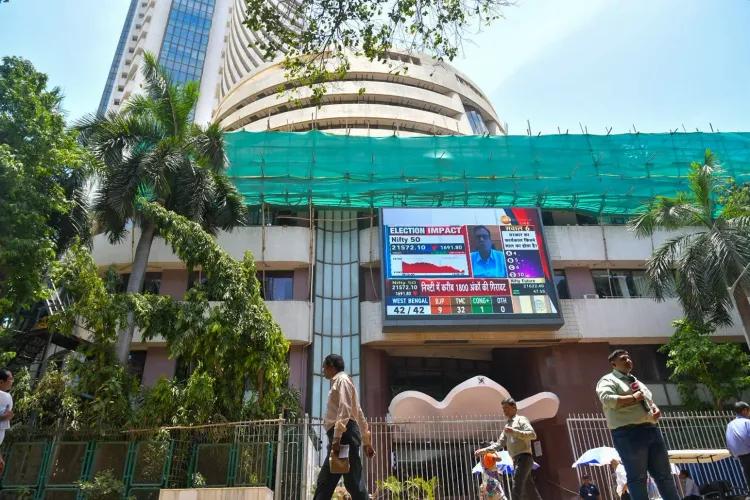Why Did the Indian Stock Market Close Lower Amid IT and Metal Stock Declines?

Synopsis
Key Takeaways
- Indian stock markets closed lower amid selling pressures.
- Major impacts from Vedanta and Hindustan Zinc declines.
- Sectoral performance varied; strength in Consumer Goods.
- Ongoing global uncertainties influence market sentiment.
- Indian Rupee struggles against the US dollar.
Mumbai, July 9 (NationPress) The Indian stock markets closed on a negative note following a turbulent trading session on Wednesday, driven by significant sell-offs in IT and metal stocks, particularly affecting Vedanta and Hindustan Zinc.
The Sensex ended at 83,536.08, down by 176.43 points or 0.21 percent. This 30-share index began the day in negative territory at 83,625.89, compared to the previous session's close of 83,712.51. Despite some fluctuations, including an intra-day high of 83,781.36, it ultimately closed lower.
The Nifty suffered a decline of 46.40 points or 0.18 percent, finishing at 25,476.10.
Amid allegations from the US short-seller Viceroy Research, shares of Vedanta and Hindustan Zinc remained in the red throughout the session. Vedanta saw a drop of 3.29 percent, closing at Rs 441.30, while Hindustan Zinc closed down 2.50 percent at 425.30. The company has firmly rejected all claims.
“In spite of ongoing global uncertainties, Nifty opened relatively flat. The index maintained a narrow trading range, indicating a sideways movement during the session,” stated Sundar Kewat from Ashika Stock Broking.
“Strength was recorded in sectors such as Consumer Goods, Automobiles, Consumption, and Financial Services, while weakness persisted in Metals, Realty, and IT stocks,” Kewat added.
Among the Sensex constituents, stocks like Bajaj Finance, Power Grid, Hindustan Unilever, Asian Paints, Mahindra and Mahindra, ITC, NTPC, and HDFC Bank finished in positive territory.
Conversely, stocks such as Axis Bank, Reliance, Tata Motors, Titan, Infosys, Bharti Airtel, TCS, and Hand CL Tech closed lower.
In the Nifty50 index, 29 shares declined while 21 advanced.
Broader indices like Nifty Next50, Nifty Midcap 100, and Nifty 100 also fell, while Nifty Small Cap 100 saw gains. Sector-wise, Nifty Bank and Nifty IT ended lower, whereas Nifty Auto and Nifty Financial Services closed higher.
Additionally, the Indian currency faced strong resistance in surpassing the 85.40 mark over the past three days due to dollar bargain buying.
“The ongoing fragility in Asian currencies has significantly impacted the local rupee, further weakened by the strengthening US dollar,” explained Dilip Parmar, Senior Research Analyst at HDFC Securities.










